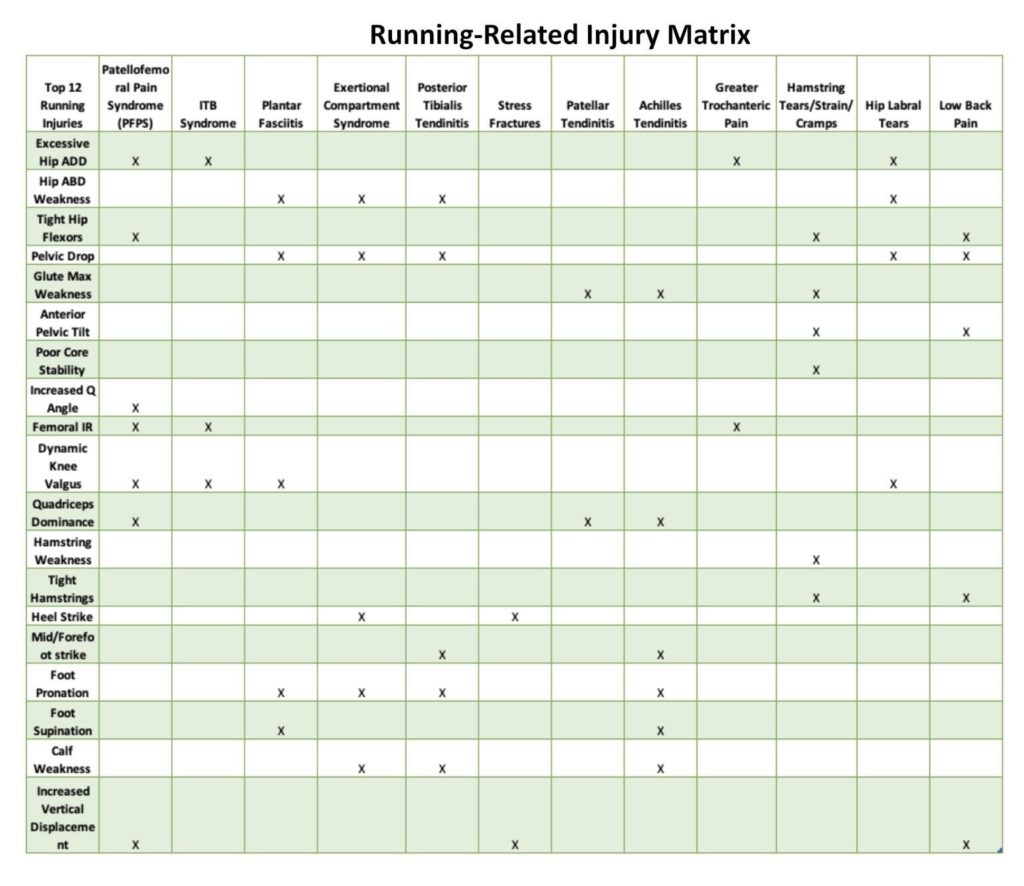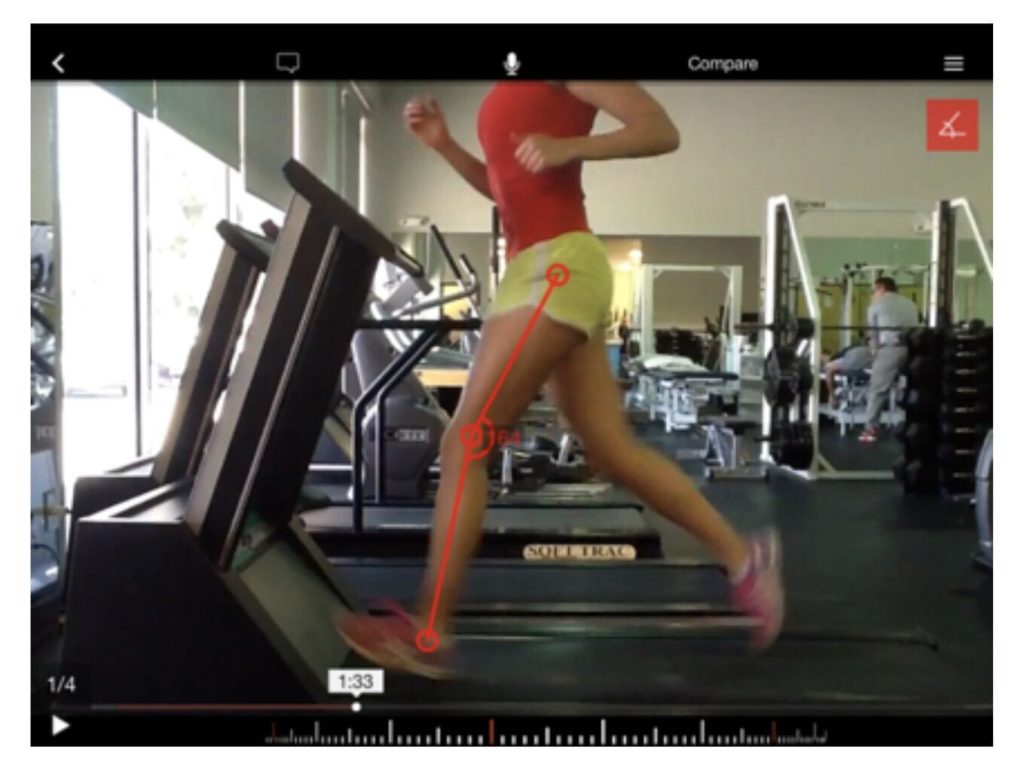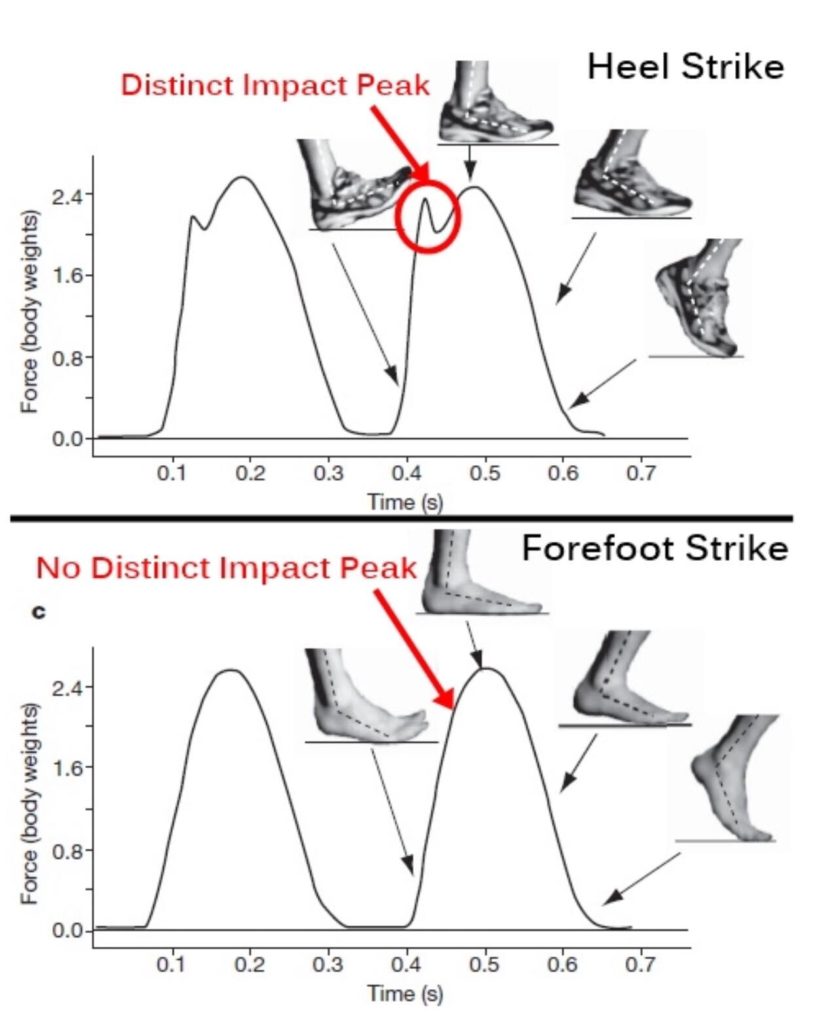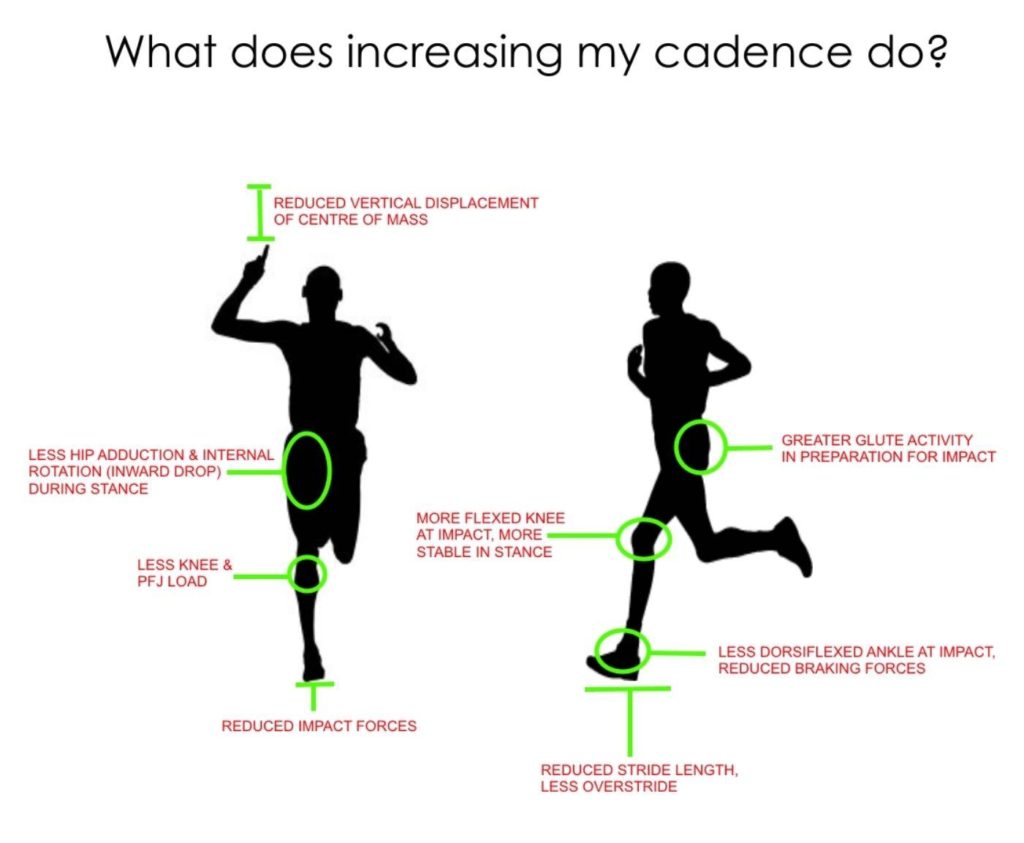How to Prevent a Running Injury
Running Injuries
Athletes or even average active individuals will often experience a running injury. This is a result of high amounts of miles over the course of their training. Poor movement is a primary cause for injuries. It is important to understand proper running form. Improper running form may be caused by problems in strength, flexibility, or coordination. These problems will place excess strain on the tissues of the body, which will become weak over time.
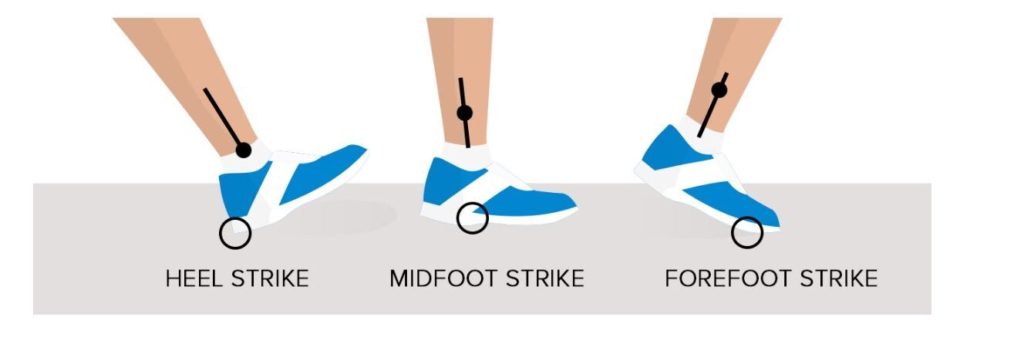
We will discuss factors that increase the risk of injury, as well as highlight what to keep an eye out for to prevent a running injury. At Symmetry Physical Therapy, our team can help you by performing a running analysis to help prevent injuries.
Running is a Cyclical Single Leg Sport
Eliminating factors that contribute to injuries include deviations that may occur at the trunk, pelvis, or hip. Running is known to be a single leg sport because of the demands to propel yourself forward. It is necessary to have proper single leg (SL) stability to be able to absorb the impact of landing.
There are several planes of motion to consider when assessing your running form. These include the forward/backward, frontal (side to side), and transverse rotational planes. Poor hip stability occurs when we see the pelvis or hip falter in any of these planes as the body attempts to absorb the forces. Poor hip stability will appear as increased hip adduction or internal rotation due to strength deficits in the glutes.
Individuals may display poor hip utilization in the forward/backward plane, which will result in quadriceps-dominant movement patterns. An increase in this movement pattern places pressure on the front of the knee. Decreased core stability can cause increased stress on bones, ligaments, and joints.
A Running Injury Can Start at the Bottom
Factors that contribute to running injuries include deviations at the foot, ankle or lower leg. Runners need to pay attention to their foot-contact patterns to see whether he/she lands on the heel or mid/forefoot while they are running. One contact pattern is not necessarily better than the other. Heel-strike patterns have higher impact forces. Mid-/forefoot strike patterns have decreased impact forces and improved active shock attenuation.
If you are unsure of your running style, look at the tread on your shoes to see where it is most worn down. Focus on which part of your foot hits the ground first. If you are considering changing from heel-strike to forefoot-strike pattern, you will need to decrease your volume of mileage until your tissues becomes used to the new pattern. Many injuries occur when switching styles without adjusting the volume with gradual progression of mileage.
Shock Absorption
Each runner’s strategy during their stride is important to understand why an injury will occur. Walking increases ground reaction force by 1.1x body weight, however running increases forces by 2-3x body weight. These forces are absorbed by the tissues in the body either actively or passively. Active shock absorption occurs when the joints go through greater ranges of motion to allow for the muscles and to decrease the forces. Passive shock absorption occurs with stiffer landings, causing decreased joint ranges of motion.
Active shock absorption allows for improved movement because muscles are able to contract or lengthen. Passive shock absorption is tougher on the joints because they have a fixed length and can only take a limited amount of force before the tissue fails.
We can measure joint angles during a slow-motion running assessment to determine how efficient you are to absorb the forces of running. It’s important to have good flexibility and joint range of motion to allow for improved attenuation of the forces when you are landing, so you can utilize the energy of those forces to propel you forward into the following steps.
Cadence
Increased bounce while running indicates larger forces, which increases the loads on both active and passive structures to absorb that stress. Step rate plays a major role in shock absorption. Slower step rates (cadences) will result in higher vertical bouncing while running. Faster cadences decreases vertical displacement and allow for decreased forces at impact.
Normal cadence for runners is about 180 steps per minute. Increasing your step rate will make it easier to decrease the forces of running, however it may make it more difficult on your cardiovascular system.
Running Assessment
The main things to look out for while running are muscle flexibility, compensatory patterns, preferred step-rate, and typical foot-strike patterns. Flexibility deficits in the quadriceps, hamstrings, or calf can lead to a risk for developing low back pain, knee pain, plantar fasciitis, or Achilles tendinitis. Decreased great toe extension can cause increased stress on the plantar fascia, Achilles tendon, and knee due to poor shock absorption. Hip flexor tightness can cause a decrease in hip extension, which can result in low back pain, poor dynamic core and hip stability, limited glute strength, and increased strain on Achilles tendon or calf muscles.
Poor dynamic hip stability can be identified by excessive hip adduction, internal rotation, or tight hip flexors. Poor pelvic/trunk stability can be identified by a crossover step pattern, pelvic drop, or lateral trunk lean, which is indicative of strength deficits in the glutes. Running or squatting with knees over toes, the heels coming off the ground, or with excessive upright posture through the trunk, places increased strain on anterior knee due to preferred quadriceps movement patterns. These three are very common movement pattern deficiencies which can lead to injuries during running.
Running Injury Matrix
Below is a chart highlighting the top 12 running-related injuries. The body is complex and everyone is different. This chart can be a useful way to understand how each of these deficits can add up to cause a certain diagnosis. Runners will benefit from a thorough assessment to identify these areas in need of improvement to prevent injury, rather than wait until an injury occurs. It is much easier to manage these deficits prior to injury, which may not require an alteration in training. We offer a full evaluation of strength, ROM, flexibility, and running assessment to find any deviations that may be placing you at a higher risk for injury.
Interested in learning more about your stride to optimize your movement efficiency? Come in for a running eval to improve your performance and decrease risk of injury! We start by measuring your ROM and strength, film your running form in slow motion, measure the angles of your joints. The purpose of this is to see how well you are absorbing shock, and provide feedback to optimize movement efficiency. Good luck in your training and to connect with us for more tips!
